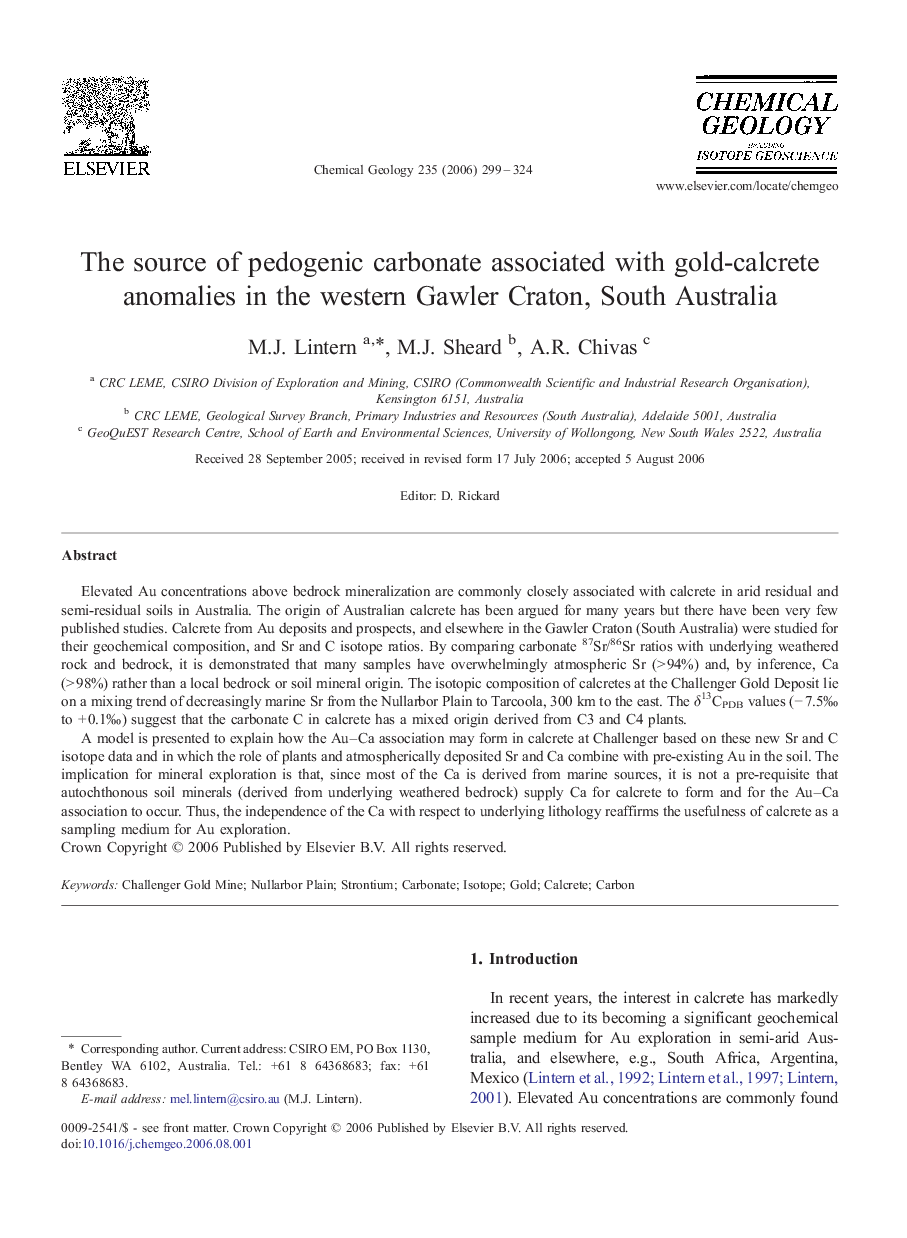| Article ID | Journal | Published Year | Pages | File Type |
|---|---|---|---|---|
| 4701254 | Chemical Geology | 2006 | 26 Pages |
Elevated Au concentrations above bedrock mineralization are commonly closely associated with calcrete in arid residual and semi-residual soils in Australia. The origin of Australian calcrete has been argued for many years but there have been very few published studies. Calcrete from Au deposits and prospects, and elsewhere in the Gawler Craton (South Australia) were studied for their geochemical composition, and Sr and C isotope ratios. By comparing carbonate 87Sr/86Sr ratios with underlying weathered rock and bedrock, it is demonstrated that many samples have overwhelmingly atmospheric Sr (> 94%) and, by inference, Ca (> 98%) rather than a local bedrock or soil mineral origin. The isotopic composition of calcretes at the Challenger Gold Deposit lie on a mixing trend of decreasingly marine Sr from the Nullarbor Plain to Tarcoola, 300 km to the east. The δ13CPDB values (− 7.5‰ to + 0.1‰) suggest that the carbonate C in calcrete has a mixed origin derived from C3 and C4 plants.A model is presented to explain how the Au–Ca association may form in calcrete at Challenger based on these new Sr and C isotope data and in which the role of plants and atmospherically deposited Sr and Ca combine with pre-existing Au in the soil. The implication for mineral exploration is that, since most of the Ca is derived from marine sources, it is not a pre-requisite that autochthonous soil minerals (derived from underlying weathered bedrock) supply Ca for calcrete to form and for the Au–Ca association to occur. Thus, the independence of the Ca with respect to underlying lithology reaffirms the usefulness of calcrete as a sampling medium for Au exploration.
